Page 123 -
Map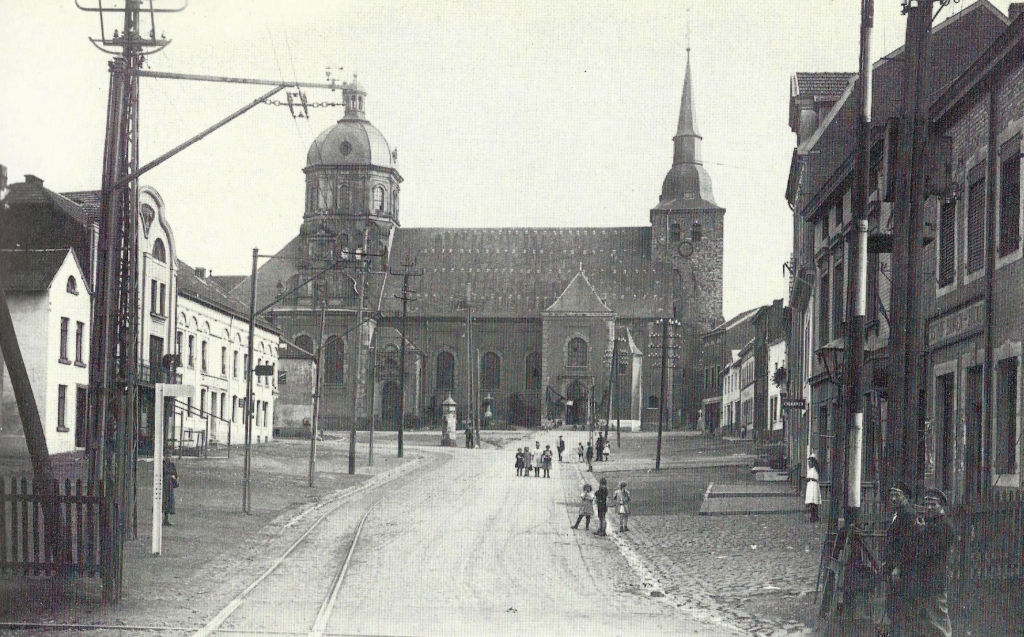
Markt with parish church St. Sebastian around 1920
Page 124 -
Map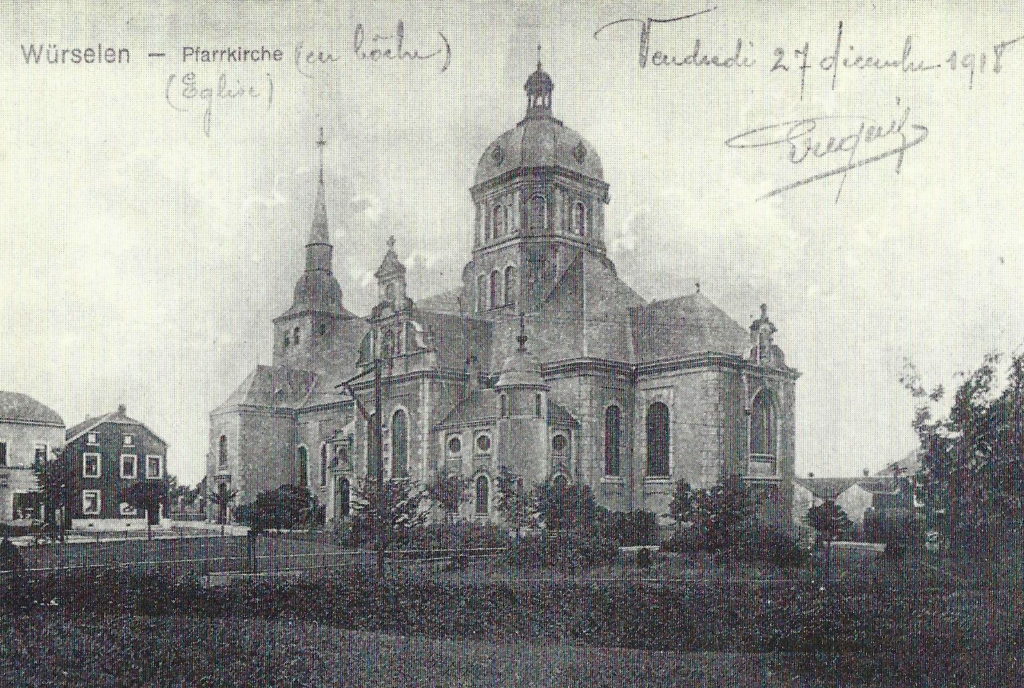
Discovered on the flea market of Paris: A postcard of St. Sebastian, sent home by an occupying soldier on December 27, 1918.
Page 128 -
Map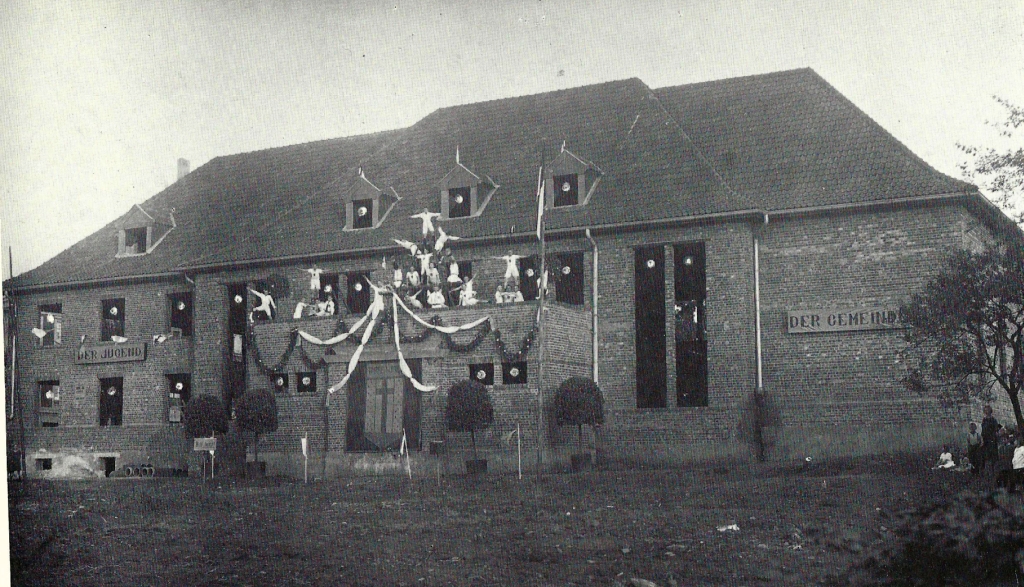
The collection of money for the construction of the youth home of St. Sebastian took a long time. When the building was completed, there were advertising days from August 14 to 16, 1926. For this event, the Armada Sporting Club created a pyramid on the balcony.
Page 132 -
Map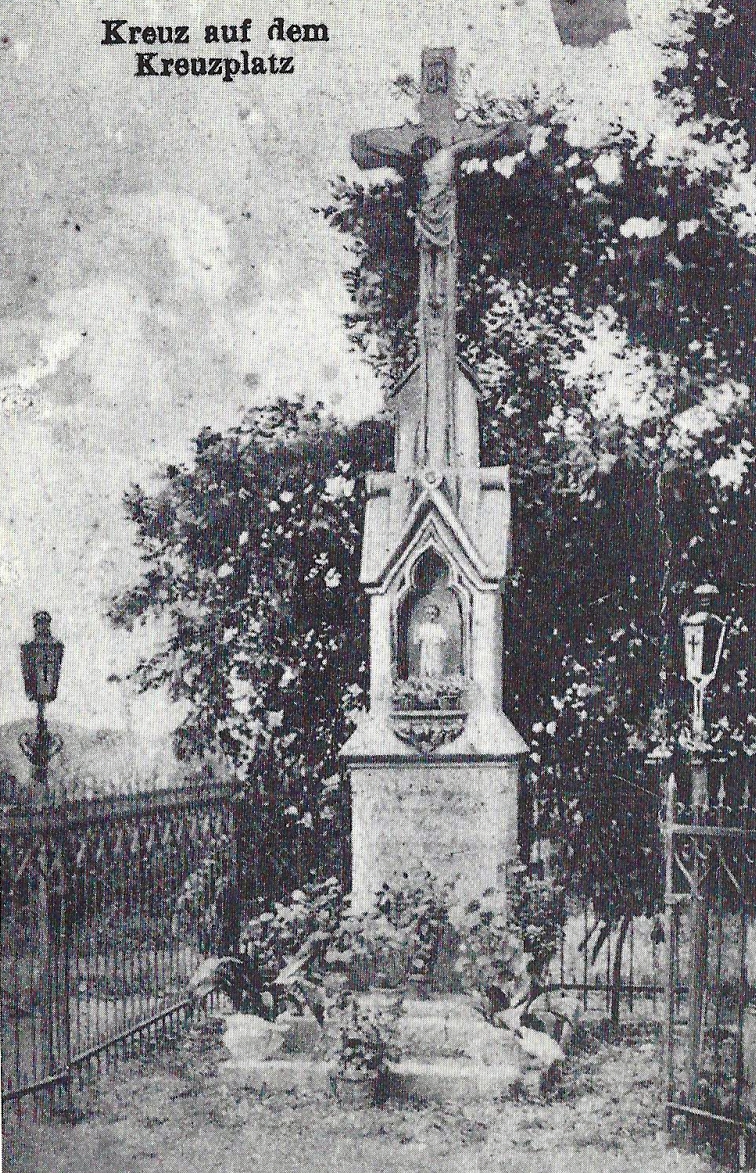
After 1908, the Scherberg Church Building Association raised funds for the construction of a church. Around this time, this postcard was also issued, the proceeds of which came into the cash register.
Page 133 -
Map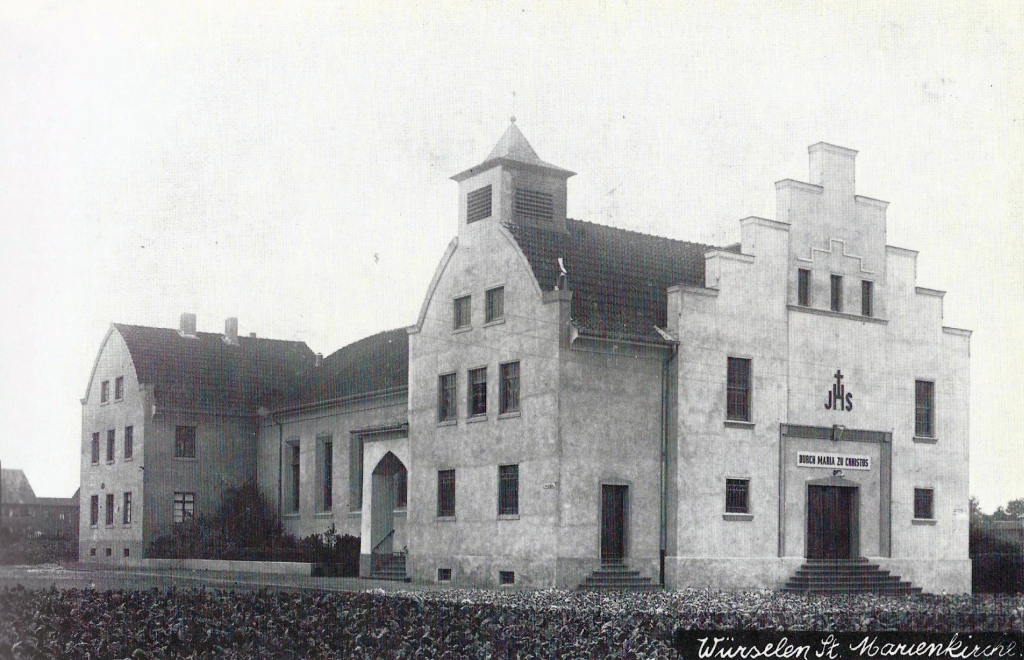
St. Marien in Scherberg at the end of the 1920s. True, 1908 a church building association was founded in Scherberg, but for some reasons the construction of the church was delayed. In 1925, the foundation stone was finally laid, and in 1926 the St. Marien Church was inaugurated.
Page 135 -
Map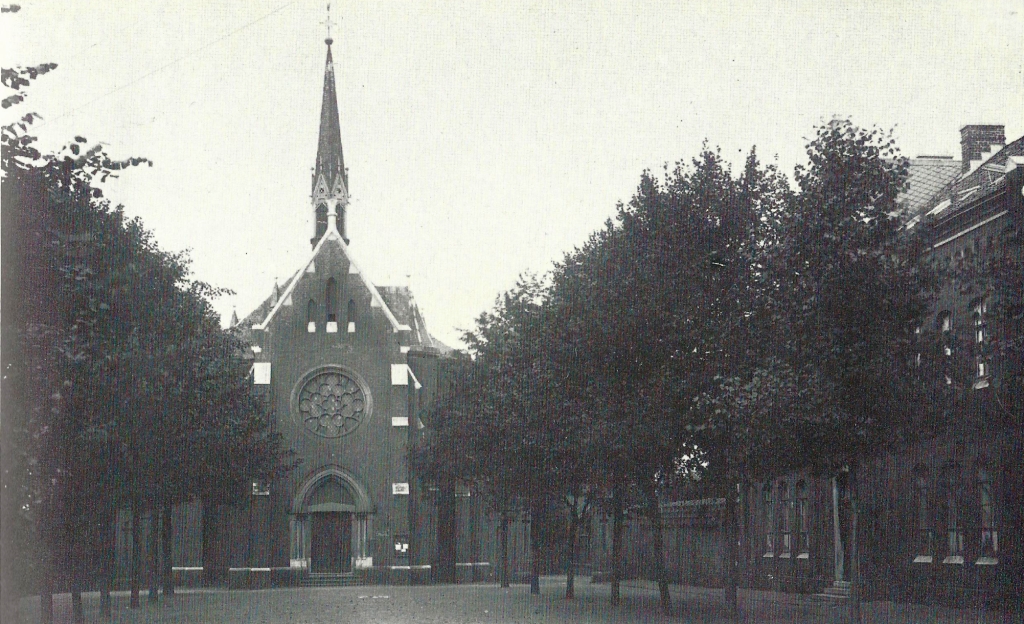
St. Balbina circa 1920; In 1865, the construction of the church in Morsbach started, the plans came from master builder Burkart.
The church - completed in 1867 - continued to belong to the parish of St. Sebastian. In 1903, St. Balbina owned all the land rights.
Page 138 -
Map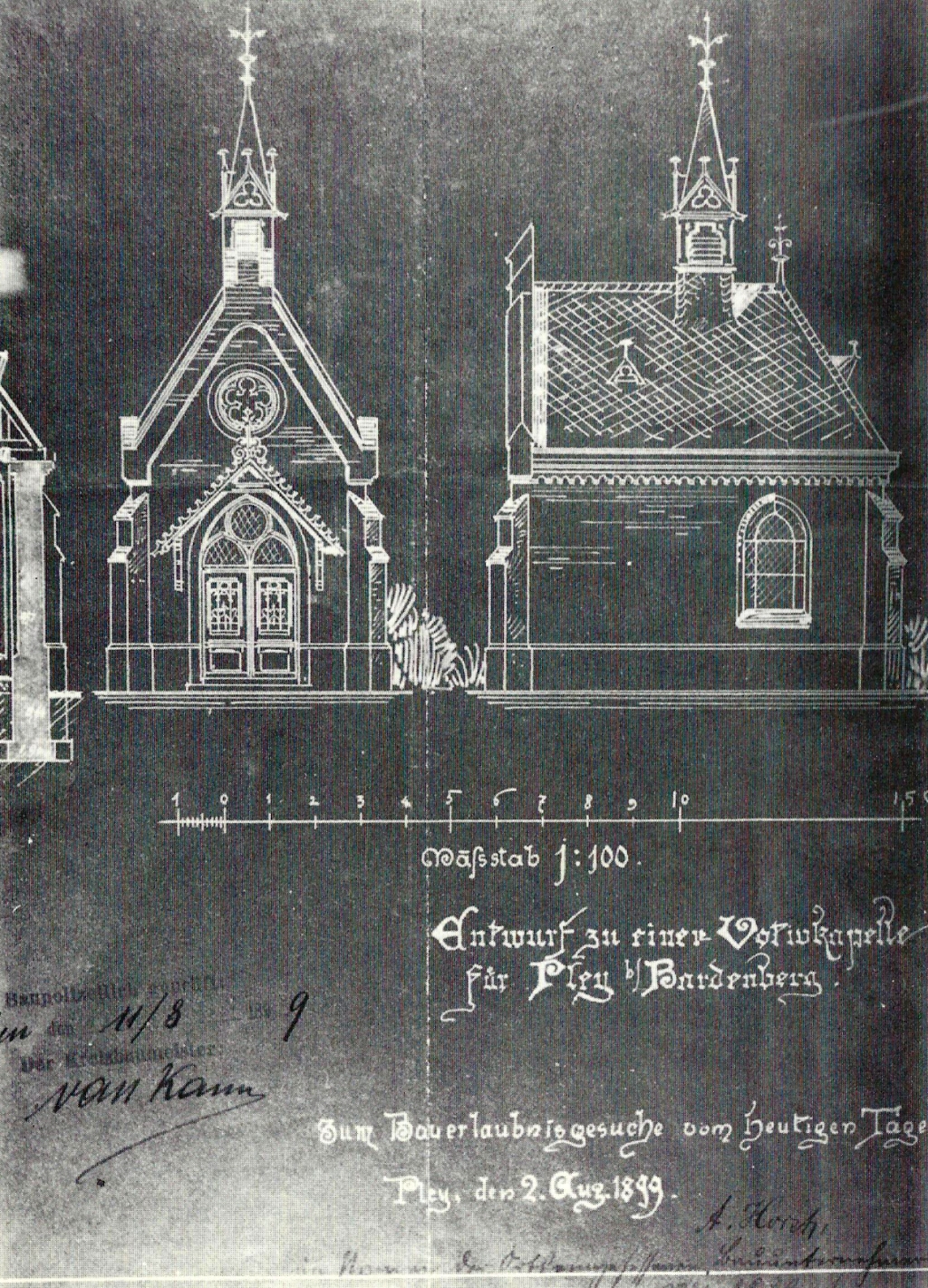
County master builder van Kann personally signed the building plans for the Pleyer Chapel for the official review, when the construction was to begin in 1899. In the same year, the shell was finished.
Page 139 -
Map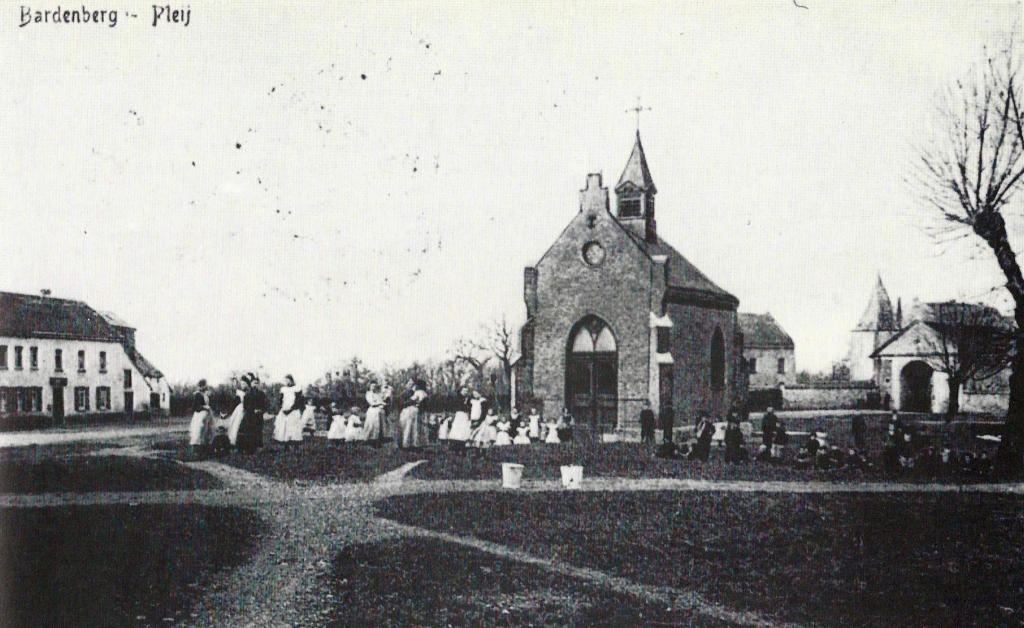
On November 4, 1900, the chapel in Pley was appointed to the Holy Father Antony of Padua inaugurated by chaplain Frederick, who represented the parish priest Dörnemann.
„To the solemn act many residents of the municipality of Bardenberg had come in“, noted the press. Father Arsenius from the Franciscan Brothers to Bleyerheide address to the Way of the Cross in the chapel. The pictures there and the Crosses were a donation of the ‘Patres’."
Page 140 - top left picture
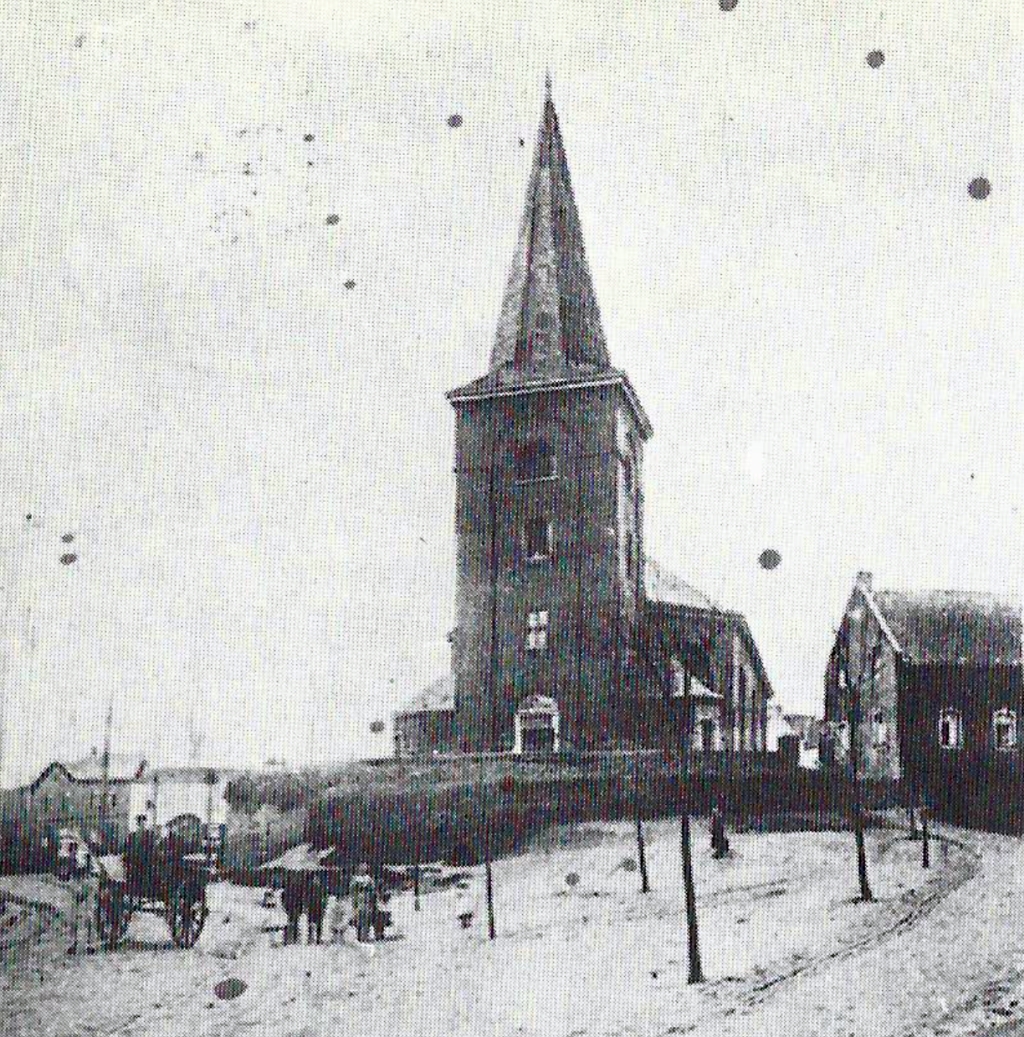
Page 140 - top right picture
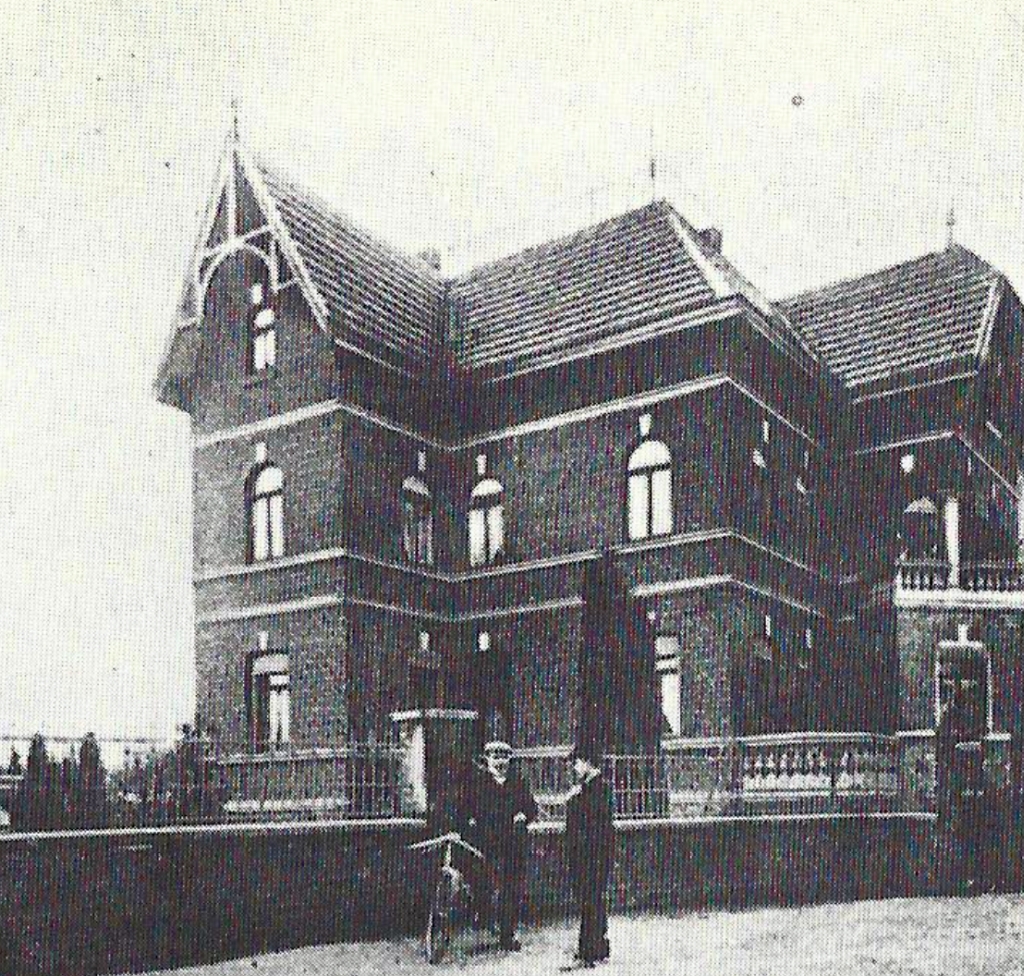
On the left the old Bardenberg church (until 1914), on the right the estate of the sawmill owner Kreutzer, which in early days was on Heidestraße. The Bardenberg people called it ‘Villa’ because of its elaborate design.
Page 140 - bottom picture
_1024.jpg)
From 1818 to 1824, according to the plans of the Aachen State Building Inspector Johann Peter Cremer, Bardenberg's Church of St. Peter and Paul. It was rebuilt just there where the village church had stood before. 90 years later, this church, still depicted here in the picture, was replaced by a new church.
Page 141
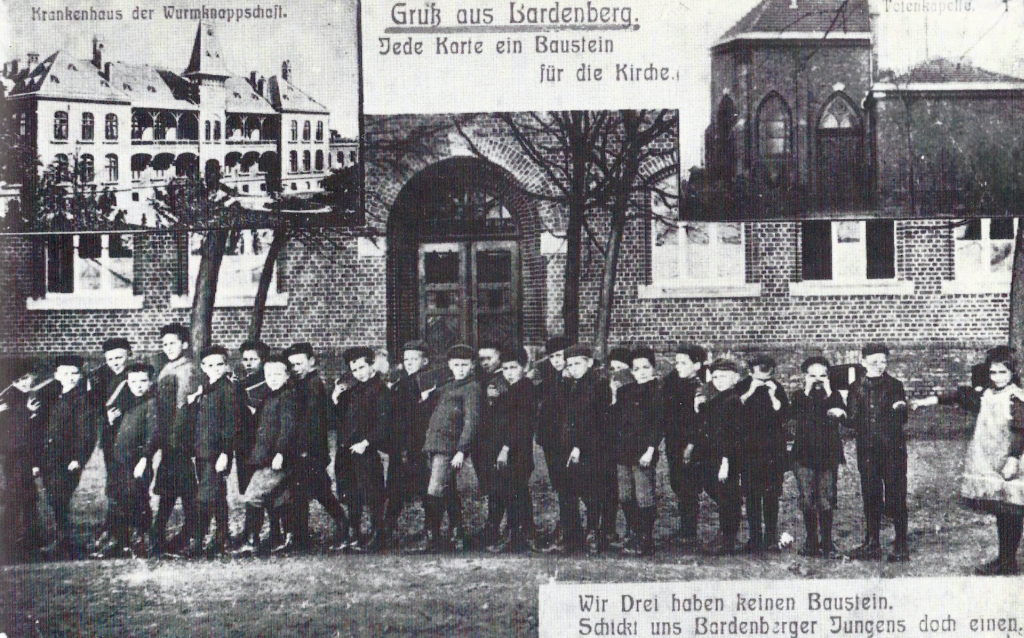
The new building of St. Peter and Paul was, as with so many other church buildings too, was partly funded through donations. „Building brick postcard“ (Bausteinansichtskarte), about 1914.
Page 142
From a newspaper article on the church building of St. Peter and Paul ‘Echo der Gegenwart’ („Echo of Today“) Nr. 127 of June 1, 1926):
„Bardenberg, May 28. On Sunday, 6 June, Mr Auxiliary Bishop Dr. Sträter will inaugurate the local parish church, which is built according to the plans of Mr. Van Kann. At 8 o 'clock the most highly worthy Gentleman will welcome people at the Cross of the Grindelstraße. Here a brief overview of the Church's history is given:
January 7, 1914 the demolition of the tower and a part of the choir of the old church began. At the festivals of Peter and Paul of the same year the foundation stone of the new church was to be laid. Just then, the news of the assassination of the Austrian heir to the throne was published, which brought about the war in close prospect. The Saturday afternoon remains unforgettable. Strokes on the bells of the old church that were still in the old scaffold but down on the ground announced mobilization to the war. The following Monday, construction rested, as der Polier and two brothers of the constructor Käfer were called in. Fortunately, however, it was decided to continue the further construction. Otherwise, as unfortunately happened to so many municipalities, they would have had only worthless war bonds in their hands.
During the Peter and Paul festival of 1915, the first part of the building, Cross and Choir, was incorporated by the late Mr. Dechant Brandt. In the morning, for the last time in the old church, the mass was celebrated. In the afternoon a procession transferred the Most Holy Sacrament into the new part of the Church.
Now the demolition of the old church began. The work became more and more difficult, especially in 1916, when the entrepreneur was also drafted and shortly thereafter was killed. The number of workers was decreasing, but until the end the „Alte Nikla“, well-known in the whole village, was still the main worker.
Christmas 1916, the second part of the church could be used, although the covering was still missing and the plastering work had not finished yet. The tower was errected up to the roof height at the time. Now the building was dormant, which at that time was already fully paid by the parish. In 1921, the construction company Hubert Schwartz from Würselen completed the bell floor of the tower. And in 1922 the hood was put on, which was originally planned higher, but in the dreary time, where everything was going down, remains lower than planned.
In 1923, the three new bells were mounted. Thanks to the donations of the miners working in Holland and the gifts from America for today's prices of about 700 marks. The bells are rung by electric drive, made by the company Schöner from Würselen.
The gifts for the interior equipment have also flowed and in many things and are still flowing today, so that most of the benches, as well as high altar, altar of St. Joseph, pulpit and communion bench could be newly procured. In this way, the parish of Bardenberg can be proud of its magnificent church which will be a landmark of Bardenberg like the water tower, rising at the height and looking far into the country and rightly rejoice in the work which was done relying on the great willingness sacrifice and consensus. The main merit of the creation of this work falls to Mr. Pfarrer Hesseler, who restlessly worked in the difficult years of war and post-war and brought the new parish church to splendour and prestige.“
Page 143 -
Map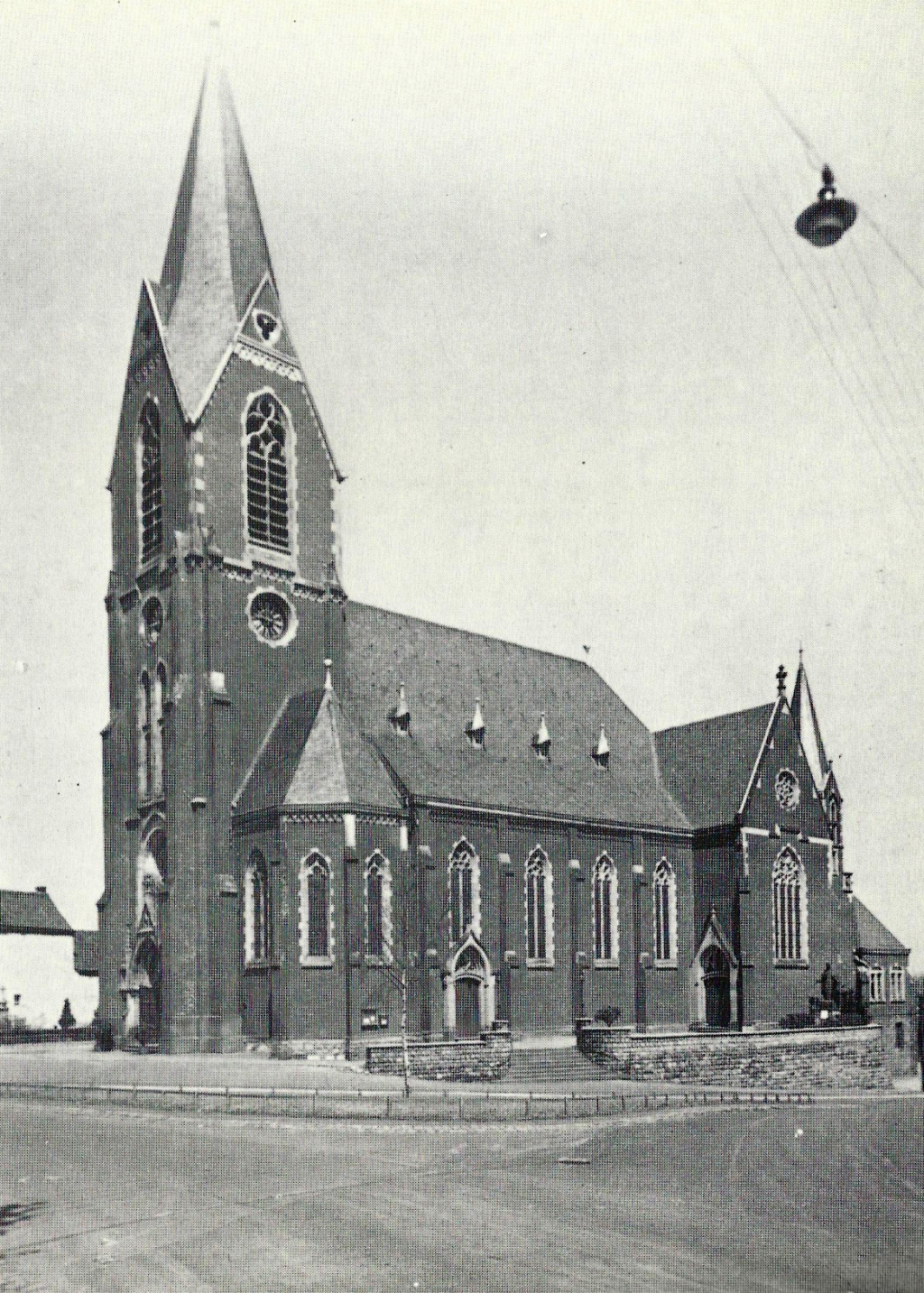
St. Peter und Paul 1926
Page 146 -
Map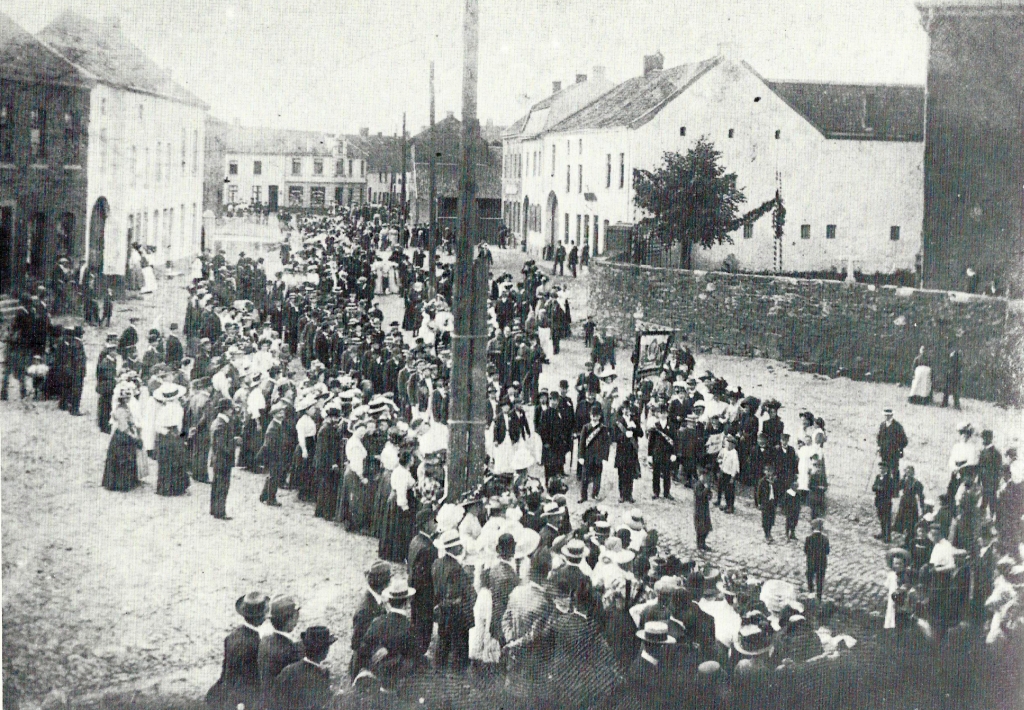
Corpus Christi procession around 1910 in front of St. Peter and Paul, in the foreground the ‘Marianische Jünglingsverein’.
Page 147
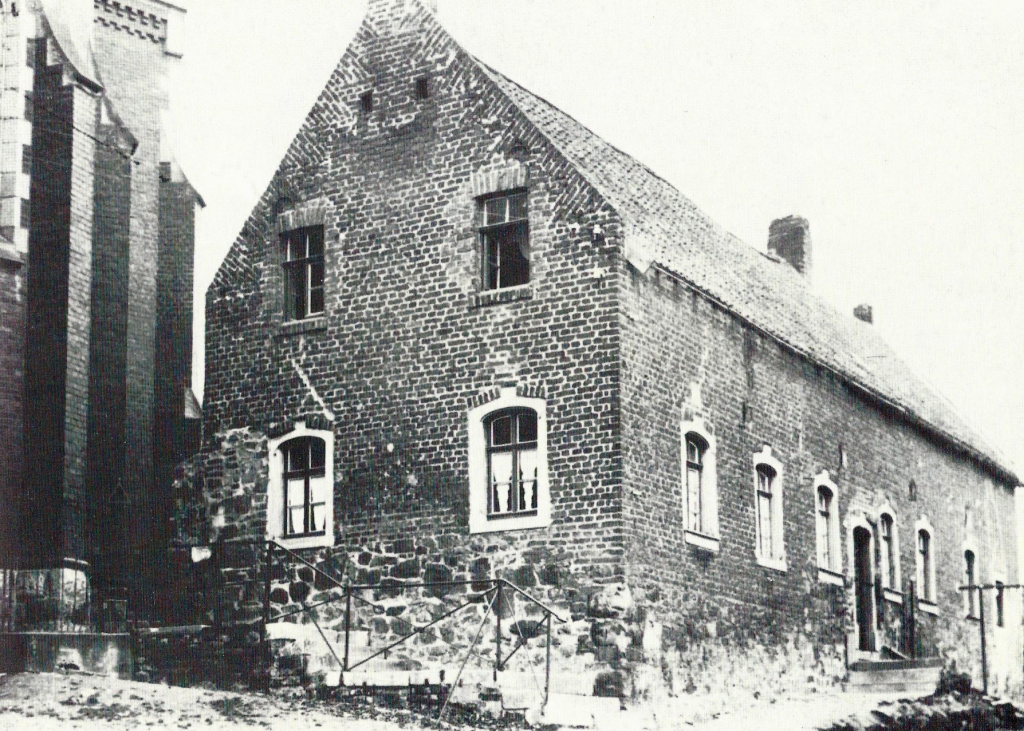
The old coastal house next to St. Peter and Paul also served as a school.
Page 148
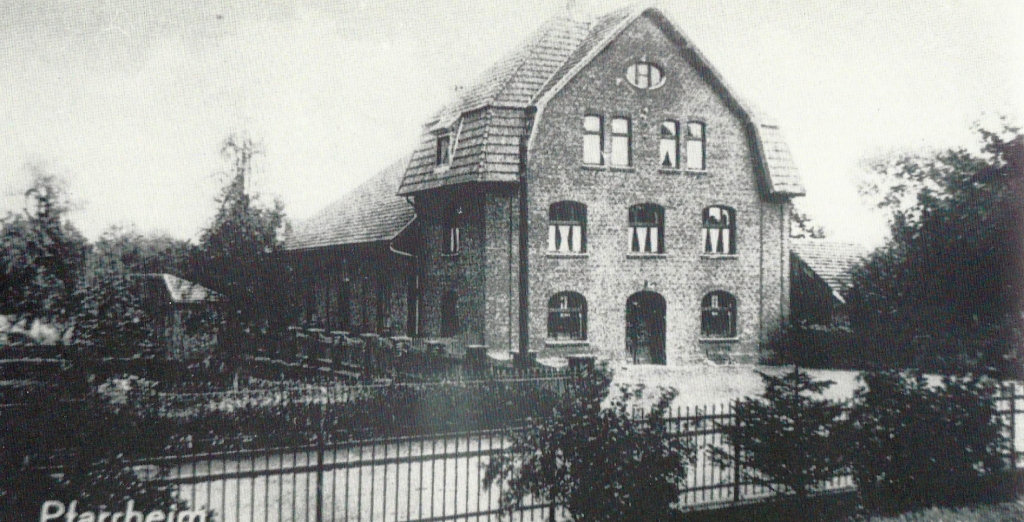
Parish Home of St. Lucia, Weiden, before the destruction in 1944.
Page 149 -
Map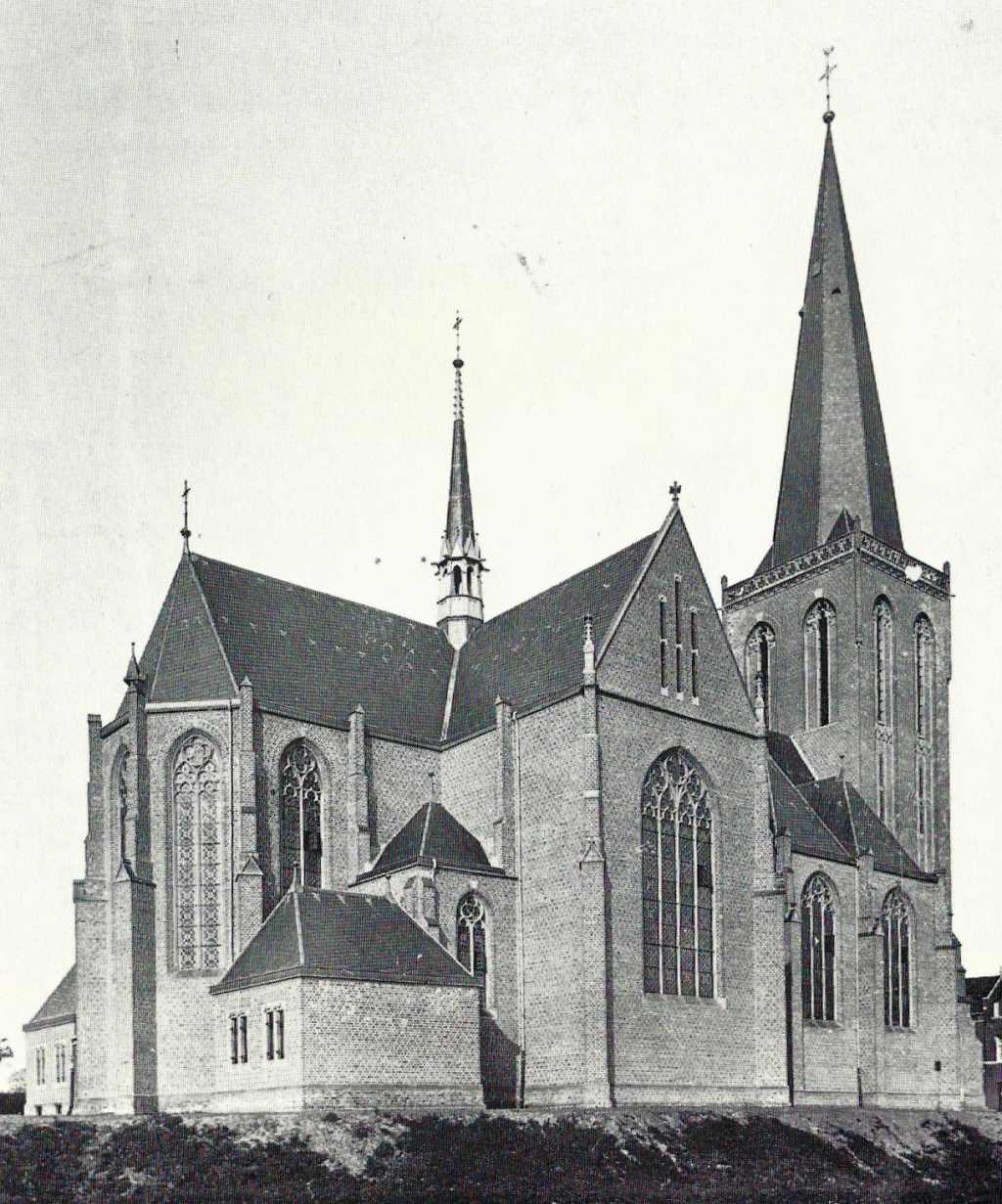
In the 16th century, the chapel in Weiden belonged to the parish of Broich, although Broich was then on Jülich area lay while Weiden belonged to the Aachen Empire.
The old chapel was replaced by a simple brick building during the parish survey. Just south of this defunct Church a new building was constructed between 1902 and 1904 according to the plans of the Cologne Architects Th. Roß. After the destruction of the war, the mighty tower did not receive a hood during reconstruction.
The picture shows St. Lucia shortly after the reconstruction, that is, after 1904.
Page 153 -
Map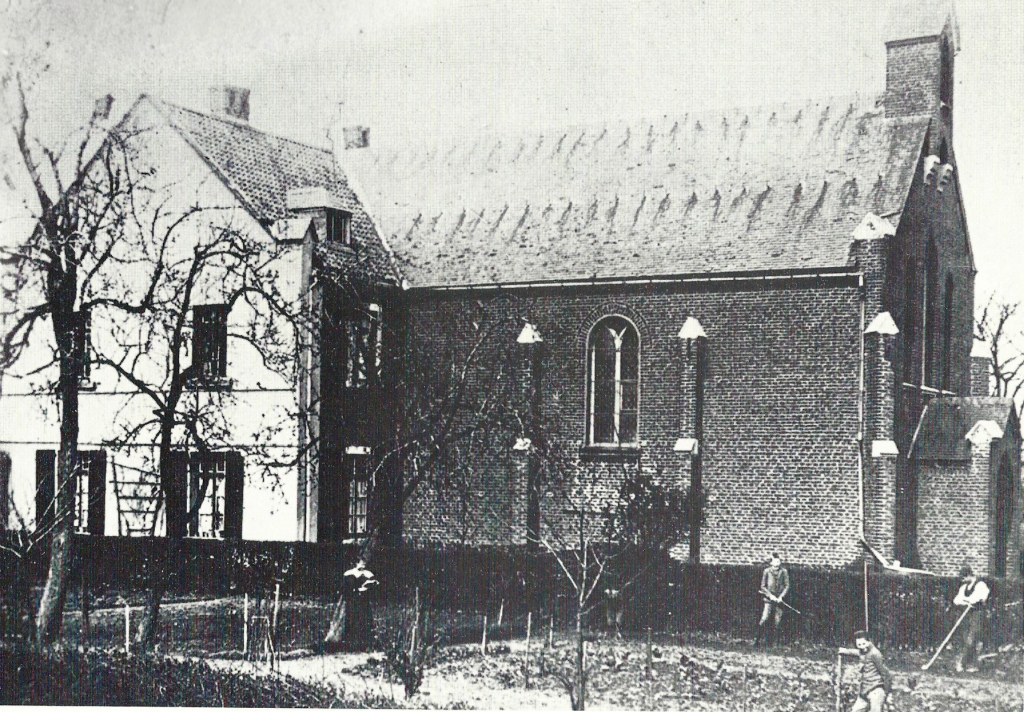
Evangelical Christians in Vorweiden have a long history. Presumably since 1578 there was a preaching house, which was demolished in 1840.
Elsewhere, a new building was built between 1847 and 1849, designed by Johann Peter Cremer, one closed complex with church, school, pastor and teacher's apartment.
Page 154 -
Map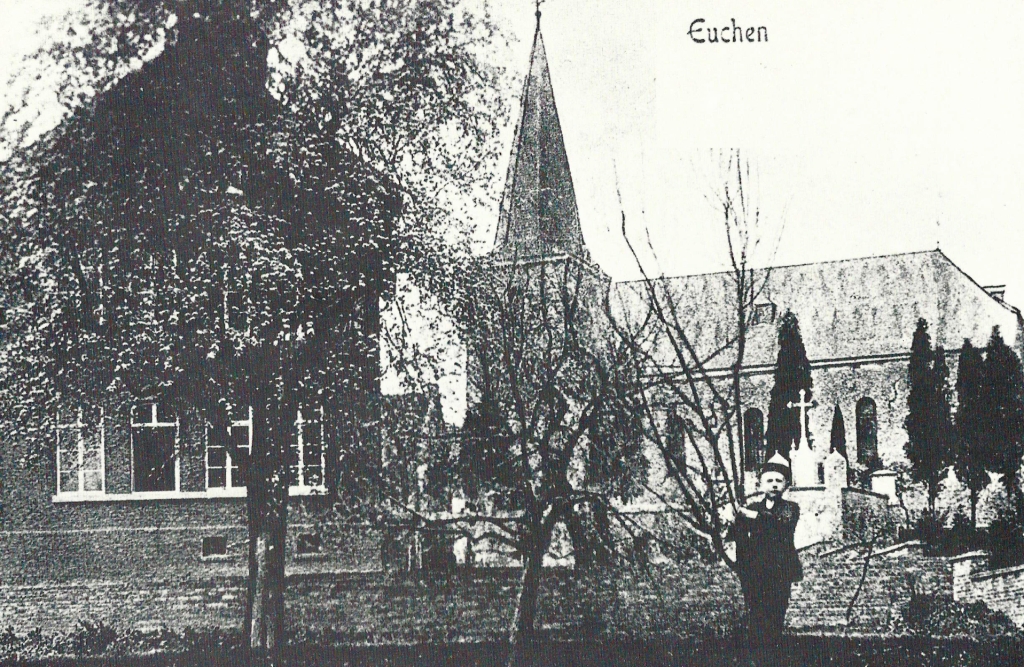
School and church in Euchen around 1870; Already in earlier centuries, the Euchener Chapel was mentioned, and until 1809 the cemetery was in Euchen used for all Broich villages. In the 19th century, the church in Broich was the Parish Church; Euchen was a Chapel in the parish of Broich. In 1855, the Euchen people got a separate asset management, on 7 May 1905 St Willibrord was elevated to a parish church.
Page 157 -
Map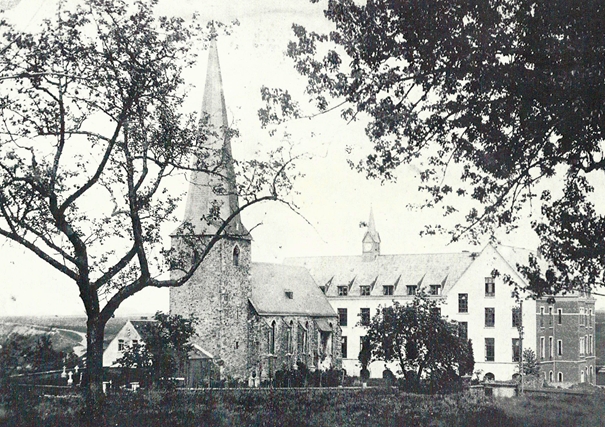
Church and Mission House Broich circa 1910.
Page 158 - Lindenplatz 3
Map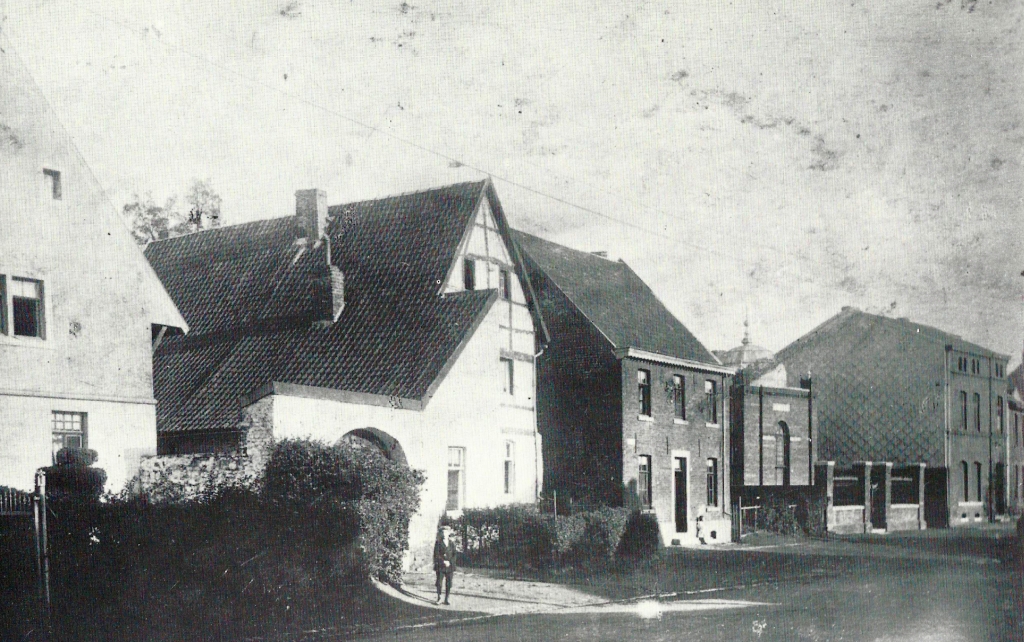
Lindenplatz with synagogue around 1920; Already the chronicle of the mayoralty Würselen from the 19th century reported on this building:
„To Bissen, a prayer house and a school was installed by the Israelites living here and in the neighboring congregations. The costs and the remuneration of the teacher to be appointed were incurred by the Israelites themselves.“
In the 20th century, the synagogue was hardly used, for the last time for the 70-years anniversary, celebrated in 1927.

